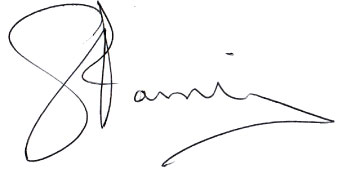HOW MUCH OF AYURVEDA CAN BE PROVEN BY SCIENCE?
The question sounds simple. The answers are not nearly so straightforward. Science rests on the premise of results that can be replicated. And that assumes people with more or less the same presenting conditions getting the same results when treated with ayurvedic medicines. Unfortunately that kind of black and white approach doesn’t sit well with the traditions of Ayurveda. Here’s why:
A person’s dosa indicates a lot about them. It’s partly about their physiology, and also an indication of their temperament. That’s at odds with the conclusions drawn by contemporary western medicine, which sees no connection between body and mind – a mistake that has its origins in the erroneous declaration of Descartes: “I think therefore I am.” No room in there for “I feel therefore I am,” let alone “I am therefore I think.” But go back a few centuries and the notion of temperament was important in western thought, with different humours linked to the elements very much like doshas.
Does that mean western medicine can be discounted? Absolutely not. Tools such as x-rays and MRI machines offer incredible insight into the ways the body works, sometimes but not always beyond what practitioners of traditional approaches have been aware of for centuries. And anaesthetics allow for surgery that would have been unthinkable in previous generations, though again the story is a bigger one than you may be aware of.
Back in the nineteenth century, there was a point when hypnosis was used to prepare patients for surgery. One of the big names in the field was John Elliotson, who opened The London Mesmeric Infirmary in 1849 and performed operations including amputations. You’d also got people like James Esdaile, who did 300 major and 100 minor operations using hypnosis.
Around the same time, nitrous oxide was gaining popularity. A learned committee looked into hypnosis and declared it bogus, saying that patients were just pretending not to feel pain when they had their limbs hacked off. It later transpired that these statements were falsified, but by then it was too late for hypnosis in medical contexts. There’s a danger of the same happening with Ayurveda if it’s viewed through a western lens.
The scientific method’s focus on specifics often removes the importance of context. There have been over 500 studies of the herb Ashwagandha, used for centuries in India for conditions as varied as tuberculosis, depression, and tooth decay. Some of those reports are promising with regard to the herb’s specific use, which more often than not in the pharmaceutical model means isolating relevant chemicals from the plant to create something that can be prescribed in tablet form. It’s a world away from the way in which an Ayurvedic practitioner would work with a patient, where there’s no distinction between food and medicine, and the particular rebalancing required would be done in accord with the client’s cocktail of doshas, themselves affected by work and family and more.
Shoehorning Ayurveda into the western medical model may provide some benefits and open the door to investment. But it risks making Ayurveda into just another consumer choice and missing a much richer bigger picture in the process.
Until next time … Namaste

Founder Tri-Dosha
www.tri-dosha.co.uk







